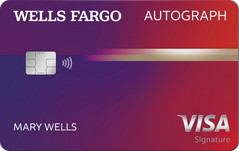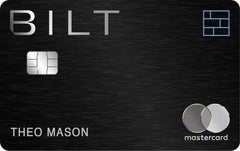The Sapphire Reserve brings plenty of reward opportunities and valuable perks to the table, but the hefty $550 annual fee, weakened sign-up bonus and limited luxury-grade travel benefits might push some cardholders to alternative cards.
Rates and fees: One of the highest annual fees
Many of the Sapphire Reserve card’s rates and fees are typical of a premium travel card: no foreign transaction fees, no intro APRs and an ongoing APR on par with the current average interest rate. The $550 annual fee is probably one of the most eye-catching aspects of the card, and it might seem intimidating at first glance.
Since the Sapphire Reserve is one of the highest-caliber premium travel rewards cards, its annual fee is similarly one of the highest you’ll find. It sits right in the middle of the top three luxury-level cards, between the Amex Platinum Card ($695 annual fee) and the Capital One Venture X ($395 annual fee - See Rates & Fees).
If you’re concerned about the annual fee, you certainly get what you pay for. The Venture X strips away most luxury perks to be more cost-effective, and the Sapphire Reserve adds more hotel privileges, reward opportunities and partner perks with rideshares and delivery services. The Sapphire Reserve doesn’t have as many annual credits and luxury travel benefits as the Amex Platinum, but the Sapphire Reserve card’s more focused features can be well worth the price tag compared to these other two cards if you’re focused on travel rewards and enough perks to make your frequent travels more comfortable.
However, you’ll also need to look out for the $75 fee each authorized user adds to your account. This may be quite a disadvantage, as there are plenty of travel rewards cards that don’t charge for additional users (such as the Venture X, See Rates & Fees). If you have family members who use the card often, these yearly fees can be worthwhile since their travel and dining purchases could help you rack up points faster. But each user you add increases the fees you owe, which makes it difficult to offset what you’re paying with what you’re earning with rewards. The initial annual fee might be a hard sell if you’re an occasional traveler who isn’t concerned with airport lounges and the like, and the authorized user fee may make the card less affordable in this case.
Welcome offer: Solid bonus but not as strong as previous iterations
Chase recently updated the Sapphire Reserve card’s bonus, dropping it down from 75,000 points to 60,000 points after you spend $4,000 in your first three months as a cardholder. That's a decent step down with the same spending requirement, especially considering the card has previously offered 80,000 points for the same spend. Plus, the lower-tier Chase Sapphire Preferred® Card currently features the same welcome offer.
That said, this bonus is still very valuable. Since the Reserve card boosts the value of your Ultimate Rewards points to 1.5 cents each when you redeem for travel with Chase, this bonus can be worth $900 for Chase travel bookings. You may even be able to get a higher point value with the right transfer partner. Based on Bankrate’s latest point valuations, which give this card’s points a value of 2.0 cents each on average when transferred to a top travel partner, this bonus could be worth $1,200 or more.
If you’re comparing luxury travel cards and looking for the highest sign-up bonuses available, this card may not be the best fit at the moment. We estimate its bonus value falls short of the value offered by rival cards and even lower-tier premium travel cards. However, long-term value is likely a bigger draw at this caliber of premium travel cards — and is the Sapphire Reserve card’s biggest strength. In fact, the Sapphire Reserve offers one of the better sign-up bonuses available, but it isn’t often the biggest on the market.
Luxury: Not as many hotel and airport perks as rival cards
The Sapphire Reserve is one of the best cards for travel features, but some competitors have a stronger selection of luxury perks when it comes to airports and hotels — or at least a few similar parks for a much lower annual fee, in some cases.
For example, the Sapphire Reserve card’s Priority Pass Select airport lounge access is quite valuable. However, the Venture X also provides Priority Pass Select membership, plus Plaza Premium lounge access, Premier Collection hotel perks (including experience credits) and Hertz President’s Circle® status for rental cars.
The Amex Platinum charges a higher $695 annual fee, but this card provides complimentary access to Priority Pass Select lounges, plus access to Plaza Premium, Delta Sky Lounges, Escape Lounges and Select Virgin Clubhouses that Sapphire Reserve cardholders don’t have. The Sapphire Reserve also doesn’t offer membership credits for the CLEAR security screening service, which the Amex Platinum and a few other cards carry.
However, it’s worth mentioning that the Amex Platinum is naturally the better choice if you prefer stacks of annual credits, premium hotel perks and airport privileges. The Sapphire Reserve’s card structure focuses on providing higher-caliber rewards over the competition in addition to its solid perk roster.








